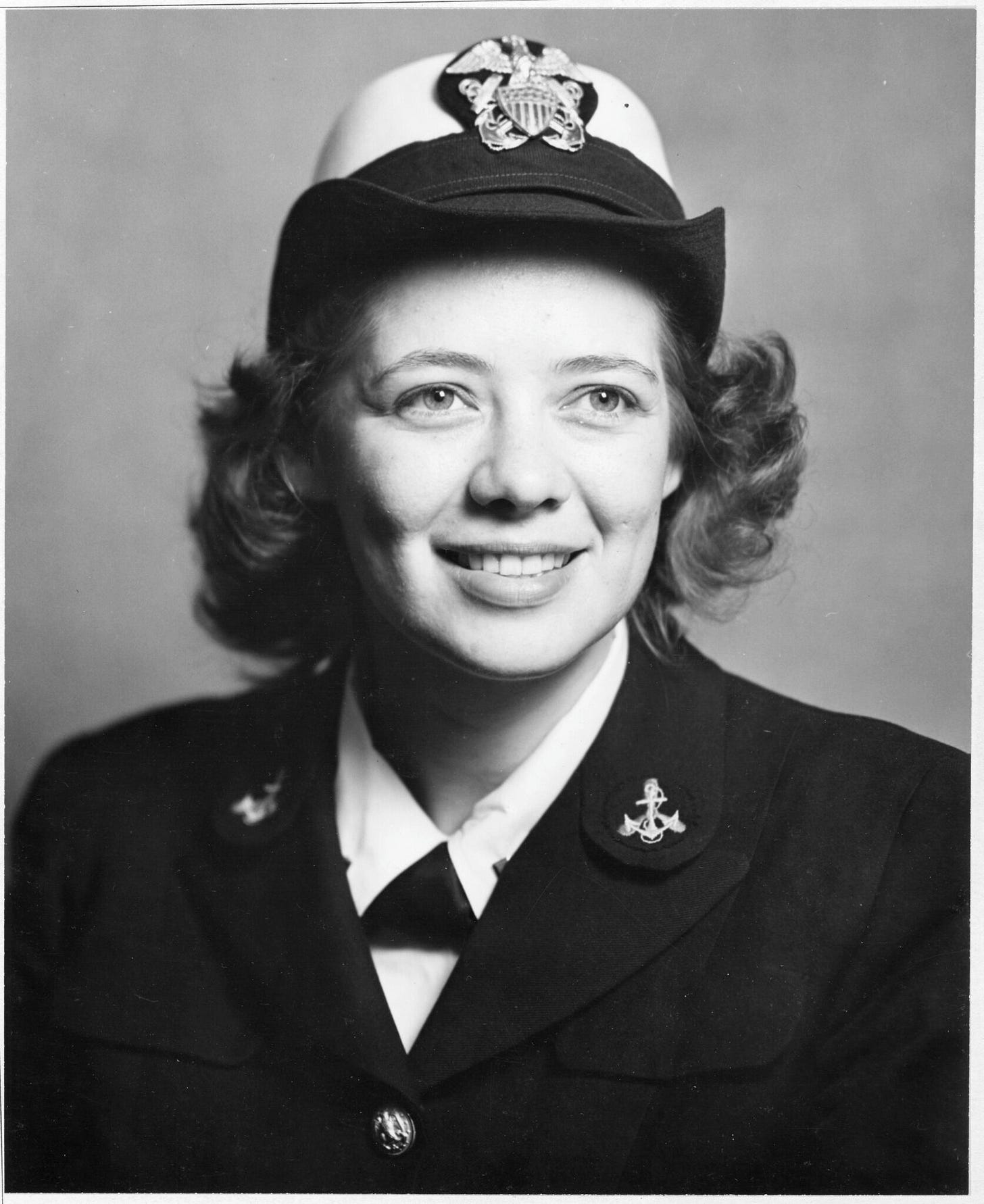🧮 Leadership Lessons from Enigma Code Breaker Julia Parsons
Problem Solving, Confidentiality and Team Work during World War II
83 years ago on July 30, 1942, President Franklin D. Roosevelt signed the WAVES Act – The Women Accepted for Volunteer Emergency Service. It allowed women to serve in the US Navy in non-combat roles and propelled women into the workforce in critical roles, including communications.
Julia Parsons was one of those women. She decoded Nazi messages with the Enigma machine, ultimately one of many women who contributed to the Allies' win in World War II. This April, she passed away at the age of 104. Her story resonated with me and the muses for The Switchboard — powerful women who’ve played key communications roles in history.
I also feel a special kinship with anyone named Julia. I wanted to honor Julia Parson’s legacy by sharing her powerful story, which she kept secret for 50 years. Her legacy teaches communications leadership lessons in problem solving, team work and confidentiality.
Photo: Concordia Lutheran Ministries | Family of Julia Parsons🧮 Problem Solving
Julia Parsons reviewed teletype messages, a type-writer-like machine transmitted via phone, from Allied Operators who intercepted German coded radio messages. The messages were sent through the Nazi’s Enigma machine that turned everything into code. With a secretly captured Enigma from a sunk U-boat, the Americans were able to decode the messages for several months, until the code changed.
This was a major problem for the war because German U-boats were sinking Allied ships with soldiers and supplies. British Mathematician Alan Turing invented a computer to decode the Enigma. It was appropriately named the Bombe. Julia described the machine as being as large “as a piano.” Despite the computer, she still did the hard work by hand. She shared these memories with the Veterans Breakfast Club:
“One week, when we hadn’t been able to decode any messages at all, I got the task of creating a huge paper spreadsheet containing information on all the messages we’d received in the past six months: the subject, the time and date, the sending location, etc. The spreadsheet revealed a small detail that we’d missed.”
🪢 Team work
Julia was one of many female cryptologists who worked together tirelessly to solve the codes. In an article in The Washington Post, Parsons shared that commitment went beyond the day job:
She shared an apartment with another code breaker in a rowhouse at 1633 Q St. NW, which became a crash pad of sorts for members of the military and others without a place to sleep.
“We had several beds and couches,” she recalled. “If somebody needed a place to stay overnight, we put them up. There were so many people traveling through Washington during the war, and hotel rooms were hard to find. Our apartment was like a hostel. When somebody got out of bed, another person took her place.”
🤐 Confidentiality
The women were sworn to secrecy and could not discuss their work outside the team. She reflected:
“If we did, we’d be arrested for treason, and the penalty was death. We took that threat seriously and understood the danger of loose lips, which, in my case, really could sink ships.”
For 52 years, Julia kept silent until she discovered the program had been declassified in the 1970s. While visiting a museum, she saw Enigma machines on display. She reflected: “It’s been good to break the silence. Good for me and for history.”
Julia Parsons' life shows us leadership isn’t always loud, it’s the persistence of problem solving, the kindness of teamwork and the discipline of confidentiality. As communicators, here’s what we can learn from Julia’s legacy — approach challenges with curiosity, collaborate with compassion and uphold trust with integrity.

Thank you for tuning in to this edition of The Switchboard. I’m always grateful for your support in growing this community of caring communicators and connectors. If you enjoyed this article, give it a heart, consider sharing it with a friend or posting a learning on LinkedIn. Signing off. — Julia


